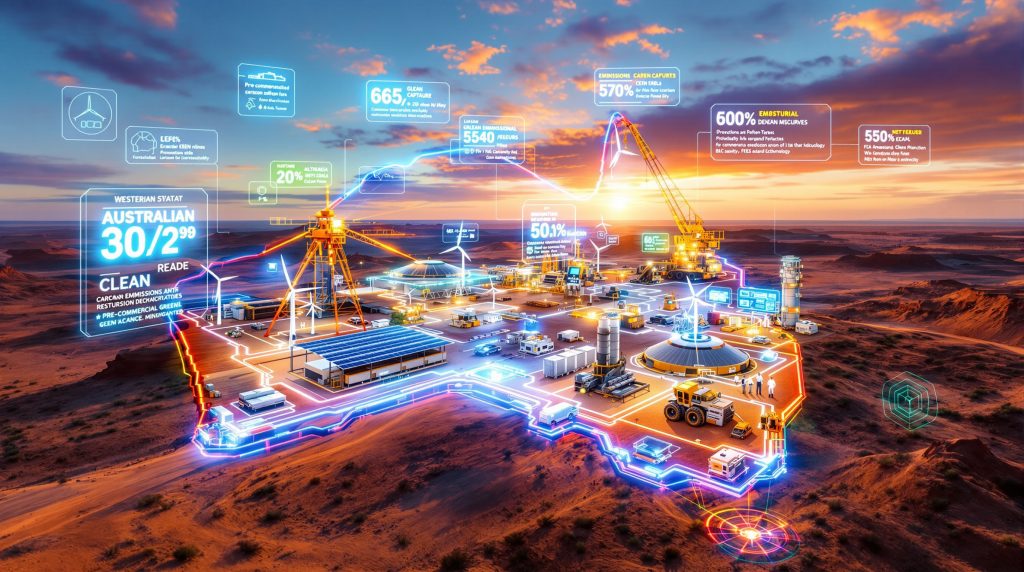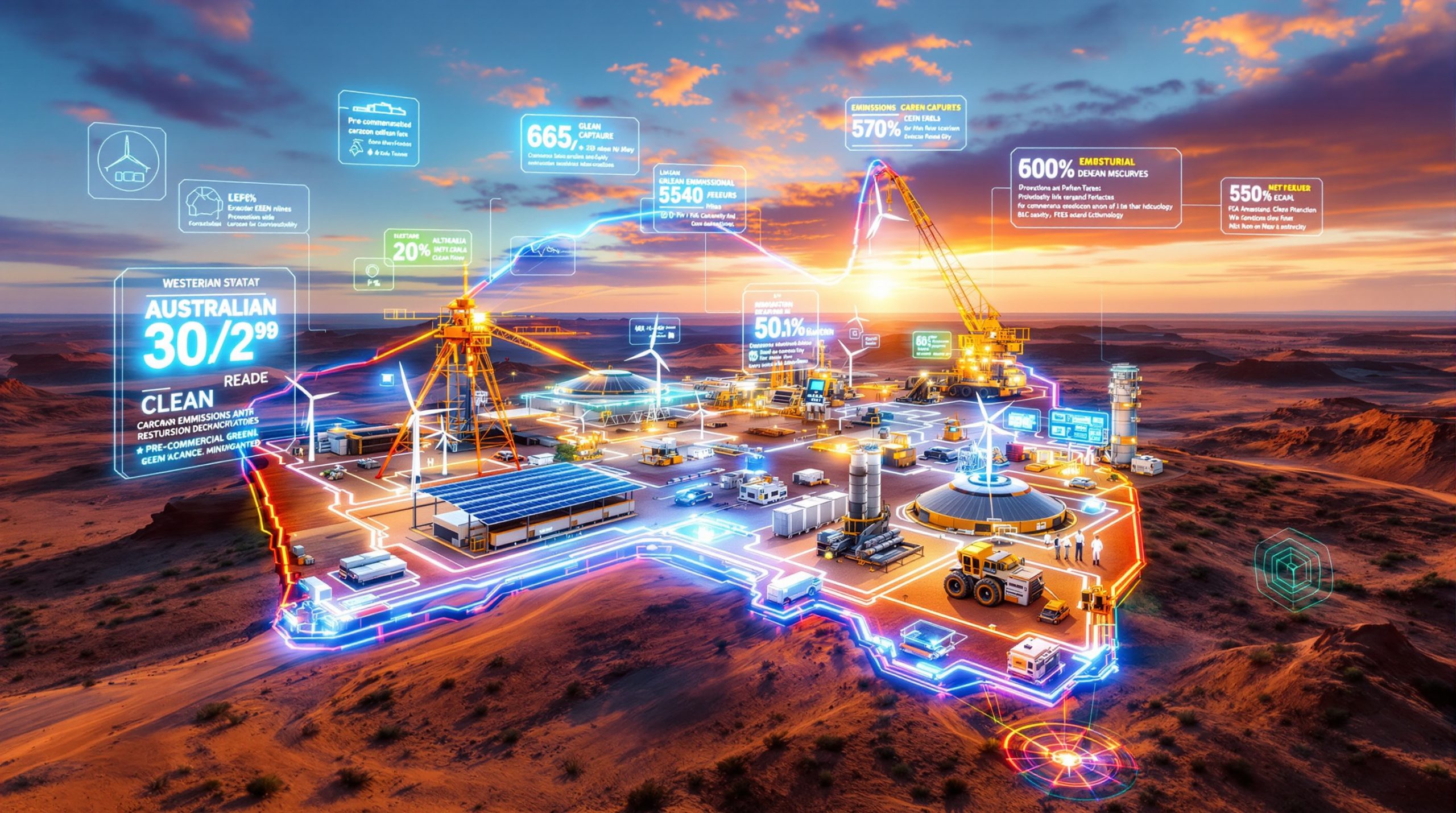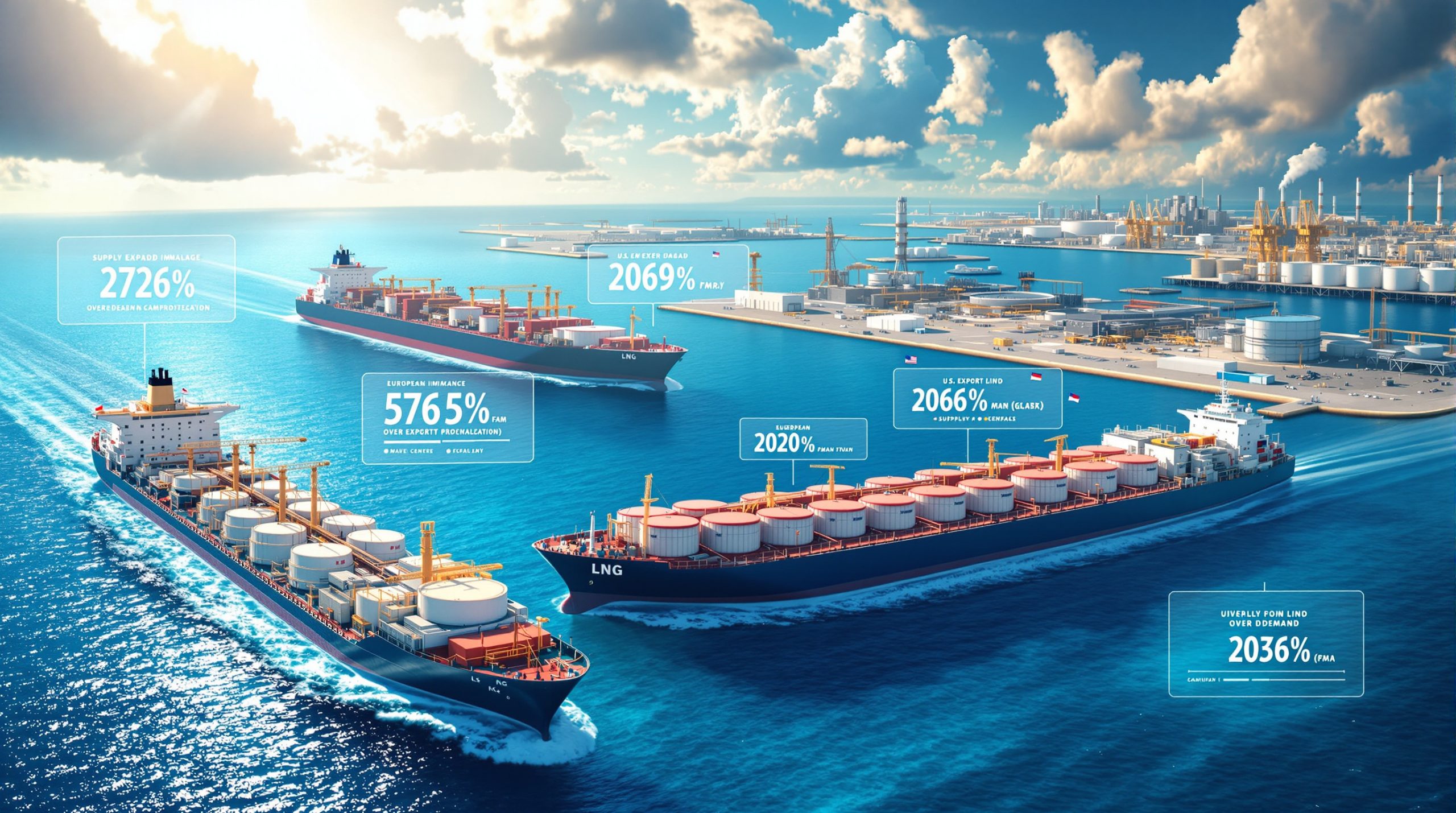What is the Net Zero Emissions RD&D Report?
The Net Zero Emissions Research, Development and Demonstration (RD&D) report represents a pivotal initiative in Western Australia's decarbonization journey. Led by University of Western Australia chemical engineering student Phoebe Tran and backed by the Minerals Research Institute of Western Australia (MRIWA), this strategic net-zero report backed by key WA body aims to create a comprehensive inventory of pre-commercial technologies that can accelerate the mining and heavy industry sector's transition to net-zero emissions.
The initiative addresses a critical gap in Western Australia's approach to emissions reduction: the lack of coordinated direction in implementing decarbonization strategies across the heavy industry sector. This fragmentation risks inefficient allocation of financial resources and could potentially impede cost-effective future investments in crucial technologies.
By cataloging available infrastructure and identifying strategic investment opportunities, the inventory seeks to provide a roadmap for more efficient and cost-effective decarbonization pathways for WA's resource-intensive economy.
The Purpose Behind the Initiative
The primary purpose of the RD&D inventory is to develop a detailed understanding of Western Australia's current technological capabilities in the low-emissions space, while simultaneously identifying critical gaps that require targeted investment. This comprehensive approach aims to facilitate more informed decision-making across the mining and heavy industry sectors.
The project will map current and planned RD&D activities throughout the state, helping to develop a shared understanding of Western Australia's capabilities and opportunities in low-emissions technology innovation. This collaborative knowledge base will enable stakeholders to identify synergies and prevent duplication of efforts.
Key Objectives of the RD&D Project
- Creating a detailed mapping of current technological capabilities and research activities
- Identifying future infrastructure requirements necessary for a successful net-zero transition
- Evaluating Western Australia's existing capacity to achieve its 2050 climate goals
- Facilitating collaborative development between industry leaders and research organizations
- Providing strategic guidance for future investments in decarbonization technologies
- Establishing a framework for measuring progress toward implementation goals
Why is Strategic Coordination Essential for Decarbonization?
The transition to net-zero emissions in heavy industry faces a significant obstacle: uncoordinated implementation of decarbonization initiatives. Without strategic alignment, individual companies and sectors may pursue overlapping or incompatible approaches, leading to inefficiencies that slow overall progress.
The MRIWA has identified that this lack of strategic direction in how decarbonization is coordinated risks the effective use of finances and impedes cost-effective future investment. This recognition underscores the importance of a coordinated approach to achieving climate goals.
The Challenge of Fragmented Efforts
When decarbonization efforts occur in isolation, several critical challenges emerge:
- Duplication of research efforts across different organizations
- Inefficient allocation of limited financial resources
- Missed opportunities for synergistic technology deployment
- Development of incompatible systems and infrastructure
- Slower overall progress toward emissions reduction targets
- Limited knowledge-sharing between sectors and organizations
These challenges can significantly impair Western Australia's ability to meet its climate commitments while maintaining economic competitiveness.
Economic Implications of Uncoordinated Action
The absence of strategic coordination creates financial inefficiencies that extend beyond immediate implementation costs:
- Higher long-term investment requirements due to redundant systems
- Reduced return on climate technology investments
- Potential stranded assets from incompatible technology pathways
- Competitive disadvantages in global markets increasingly focused on low-carbon production
- Missed opportunities for economies of scale through coordinated purchasing
- Increased risk of investing in technologies that may not align with broader industry direction
By addressing these coordination challenges, the RD&D inventory aims to create a more economically efficient pathway to decarbonization.
How Will the Inventory Transform WA's Climate Strategy?
The RD&D inventory represents a fundamental shift in Western Australia's approach to climate action, moving from fragmented initiatives to a cohesive, strategic framework that maximizes efficiency and impact.
Building a Shared Understanding
One of the primary goals of the RD&D inventory is to develop a collective understanding of Western Australia's capabilities and opportunities in low-emissions technology. This shared knowledge base will:
- Enable more informed decision-making across industry sectors
- Highlight technological gaps requiring targeted investment
- Identify opportunities for cross-sector collaboration
- Create a common language for discussing decarbonization pathways
- Provide clarity on technological readiness levels across different solutions
- Foster a coordinated approach to research and development
This collaborative knowledge-sharing approach represents a departure from siloed efforts that have characterized previous climate initiatives.
Mapping Current and Future Requirements
The project takes a systematic approach to evaluating Western Australia's decarbonization landscape by:
- Documenting existing RD&D activities across the state
- Assessing their alignment with 2050 net-zero goals
- Identifying critical technology gaps requiring attention
- Prioritizing investment areas based on potential impact
- Evaluating infrastructure needs for successful technology deployment
- Creating roadmaps for technology development and scaling
This comprehensive mapping process will provide unprecedented clarity on Western Australia's technological readiness for decarbonization.
Facilitating Collaborative Development
A key strength of the inventory approach is its focus on bringing together diverse stakeholders to create unified development pathways. The project aims to:
- Connect industry leaders with research organizations
- Align public and private sector initiatives
- Leverage complementary expertise across different fields
- Create economies of scale through coordinated investment
- Establish ongoing collaboration mechanisms
- Develop shared standards for technology evaluation and implementation
By facilitating these collaborative relationships, the inventory can help overcome traditional barriers to coordinated action.
What Timeline and Process is Being Followed?
The RD&D inventory follows a structured approach with clear milestones to ensure comprehensive coverage of Western Australia's decarbonization landscape.
Research Methodology and Timeline
The research phase of the RD&D project runs until the end of September 2025, with results and findings scheduled for publication on the MRIWA website shortly thereafter. The project follows a structured timeline with specific milestones:
- Project initiation under University of Western Australia leadership
- Data collection and analysis of current technological capabilities
- Stakeholder consultation across industry and research sectors
- Compilation of findings into a comprehensive inventory
- Publication of results and recommendations
- Implementation planning and prioritization
This methodical approach ensures thorough coverage of the complex decarbonization landscape.
Implementation Strategy
Following the completion of the inventory, the implementation phase will focus on:
- Prioritizing identified technology gaps based on impact potential
- Developing collaborative funding models for high-priority areas
- Creating specialized working groups for key technology domains
- Establishing metrics to track progress toward implementation goals
- Facilitating partnerships between technology developers and industry
- Developing pilot projects to demonstrate promising technologies
This structured implementation strategy aims to transform insights into actionable progress toward climate goals.
How Does This Initiative Connect to Broader Climate Goals?
While focused on Western Australia's mining and heavy industry sectors, the RD&D inventory connects to broader climate initiatives at state, national, and international levels.
Alignment with WA's 2050 Net-Zero Target
The RD&D inventory represents a critical component of Western Australia's broader commitment to achieving net-zero emissions by 2050. It provides the technological foundation necessary for realizing this ambitious target by:
- Identifying the most promising decarbonization pathways
- Highlighting areas where accelerated innovation is needed
- Creating a framework for measuring progress toward climate goals
- Ensuring that investments align with long-term emissions reduction targets
- Providing visibility into technology readiness levels across different solutions
- Establishing realistic timelines for technology deployment and scaling
This alignment ensures that technological development supports broader climate policy objectives.
Integration with National and Global Climate Frameworks
The inventory project connects to broader climate initiatives at national and international levels:
- Complementing Australia's national emissions reduction strategy
- Supporting compliance with international climate agreements
- Positioning Western Australia as a leader in industrial decarbonization
- Creating exportable models for technology transition in resource-intensive economies
- Facilitating knowledge-sharing with other regions facing similar challenges
- Attracting international investment in climate technology innovation
This integration helps ensure that Western Australia's efforts contribute to and benefit from global progress on climate action.
What Technologies Are Being Considered?
The inventory focuses specifically on pre-commercial technologies with significant potential for emissions reduction in mining and heavy industry.
Pre-Commercial Solutions Under Evaluation
The RD&D inventory examines a range of pre-commercial technologies with potential to transform emissions profiles in mining and heavy industry:
- Renewable energy integration for industrial processes
- Green hydrogen production and utilization
- Carbon capture, utilization, and storage (CCUS)
- Electrification of traditionally fossil fuel-powered operations
- Energy efficiency improvements for industrial processes
- Alternative materials and production methods
- Low-carbon process heat technologies
- Digital solutions for emissions monitoring and optimization
- Battery recycling solutions for energy storage systems
- Low-emissions mining equipment and vehicles
This comprehensive approach ensures coverage of the full spectrum of decarbonization opportunities.
Assessment Criteria for Technology Inclusion
Technologies included in the inventory are evaluated based on multiple criteria:
- Potential emissions reduction impact
- Technology readiness level (TRL)
- Implementation feasibility in Western Australian context
- Economic viability and cost trajectory
- Compatibility with existing industrial infrastructure
- Potential for local manufacturing and job creation
- Resource requirements and sustainability impacts
- Scalability and replication potential
- Time to deployment and commercial viability
- Alignment with broader industry decarbonization pathways
This multi-dimensional assessment helps identify the most promising technologies for Western Australia's specific context.
What Are the Expected Outcomes and Benefits?
The RD&D inventory aims to deliver substantial benefits to Western Australia's mining and heavy industry sectors, as well as the broader community.
Strategic Investment Guidance
A primary outcome of the RD&D inventory will be clear guidance for future investment decisions, helping to:
- Direct capital toward the most promising decarbonization technologies
- Avoid redundant investments in overlapping solutions
- Identify opportunities for public-private partnerships
- Create economies of scale through coordinated investment approaches
- Reduce financial risk through improved visibility into technology trajectories
- Accelerate commercialization of high-impact innovations
This strategic guidance can significantly improve the cost-effectiveness of decarbonization efforts.
Enhanced Collaboration Framework
The project aims to establish lasting collaborative structures between:
- Mining and resource companies
- Research institutions and universities
- Technology developers and manufacturers
- Government agencies and regulatory bodies
- Financial institutions and investors
- Industry associations and consortia
These collaborative frameworks can help overcome traditional barriers to coordinated action and accelerate technology deployment.
Competitive Advantage for WA Industry
By taking a strategic approach to decarbonization, Western Australia's heavy industry sector stands to gain significant competitive advantages:
- Early adoption of cost-effective emissions reduction technologies
- Improved access to green finance and investment
- Enhanced reputation with environmentally conscious customers
- Reduced exposure to future carbon pricing mechanisms
- Development of exportable decarbonization expertise
- Positioning as a global leader in low-carbon resource production
These advantages can help ensure Western Australia's continued economic prosperity in a carbon-constrained world.
How Will Progress Be Measured and Reported?
Effective measurement and reporting mechanisms are essential for tracking progress and maintaining momentum toward decarbonization goals.
Tracking Implementation Success
Following the publication of the inventory, progress toward implementation will be tracked through:
- Regular updates on technology deployment across target sectors
- Measurement of actual emissions reductions achieved
- Assessment of investment flows into priority technology areas
- Evaluation of collaborative initiatives established through the project
- Monitoring of technology development milestones
- Analysis of barriers encountered and solutions developed
These tracking mechanisms will help identify both successes and areas requiring additional support.
Public Reporting and Transparency
Commitment to transparency is a core principle of the initiative, with plans for:
- Publication of findings on the MRIWA website
- Regular progress updates to stakeholders
- Open sharing of non-proprietary technology assessments
- Clear communication of successes and challenges
- Case studies highlighting implementation examples
- Forums for ongoing stakeholder engagement
This transparency ensures accountability and facilitates knowledge-sharing across the broader community.
What Makes This Approach Innovative?
The RD&D inventory represents a departure from traditional approaches to industrial emissions reduction in several key ways.
Beyond Traditional Emissions Reduction Strategies
The RD&D inventory represents a departure from traditional approaches to industrial emissions reduction in several key ways:
- Focus on pre-commercial technologies rather than only mature solutions
- Emphasis on strategic coordination rather than individual company initiatives
- Recognition of the need for sector-wide transformation
- Integration of research and commercial perspectives
- Proactive rather than reactive approach to technology adoption
- Systematic mapping of technological capabilities and gaps
- Collaborative approach to innovation and implementation
- Long-term perspective on technology development and deployment
These innovative elements help overcome limitations of previous decarbonization efforts.
Creating a Model for Other Regions
The methodology developed through this project has potential applications beyond Western Australia:
- Adaptable framework for other resource-rich regions
- Scalable approach for different industrial sectors
- Transferable lessons for technology prioritization
- Replicable model for research-industry collaboration
- Exportable expertise in strategic decarbonization planning
- Shareable insights on technology assessment methodologies
This potential for broader application enhances the initiative's impact beyond Western Australia's borders. Furthermore, it contributes to global efforts in achieving energy transition security through coordinated technological development.
FAQ: Western Australia's Net-Zero Transition
What is the primary goal of the Net Zero Emissions RD&D report?
The primary goal is to build a comprehensive inventory of pre-commercial technologies that can facilitate Western Australia's mining and heavy industry sectors in transitioning to net-zero emissions, providing strategic direction for future investments and infrastructure development.
Who is leading this initiative?
The project is led by University of Western Australia chemical engineering student Phoebe Tran and is backed by the Minerals Research Institute of Western Australia (MRIWA), which provides institutional support and industry connections.
When will the findings be published?
The research phase runs until the end of September 2025, with results and findings scheduled for publication on the MRIWA website shortly thereafter.
How will this project benefit Western Australia's economy?
The project aims to ensure cost-effective decarbonization by preventing redundant investments, identifying strategic opportunities, facilitating collaboration between industry and research organizations, and positioning WA as a leader in low-emissions industrial technologies.
What types of technologies are being evaluated?
The inventory focuses on pre-commercial technologies with significant emissions reduction potential, including renewable energy integration, green hydrogen, carbon capture and storage, industrial electrification, energy efficiency improvements, and mining electrification trends that support decarbonization.
How does this initiative connect to Western Australia's broader climate goals?
The RD&D inventory provides the technological foundation necessary for achieving Western Australia's commitment to net-zero emissions by 2050, identifying key pathways and investment priorities to reach this target. Additionally, it supports broader sustainable mining transformation efforts that are essential for the state's future economic prosperity.
Disclaimer: This article discusses future climate technology and investment strategies. While based on current research initiatives, the actual implementation and effectiveness of these technologies may vary. Readers should consider their own circumstances and seek professional advice before making investment decisions based on information contained in this article.
Interested in Discovering the Next Big Mineral Opportunity?
Stay ahead of the market with Discovery Alert's proprietary Discovery IQ model, delivering real-time notifications on significant ASX mineral discoveries as they happen. Explore why major mineral discoveries can lead to exceptional returns by visiting our dedicated discoveries page and start your 30-day free trial today.




